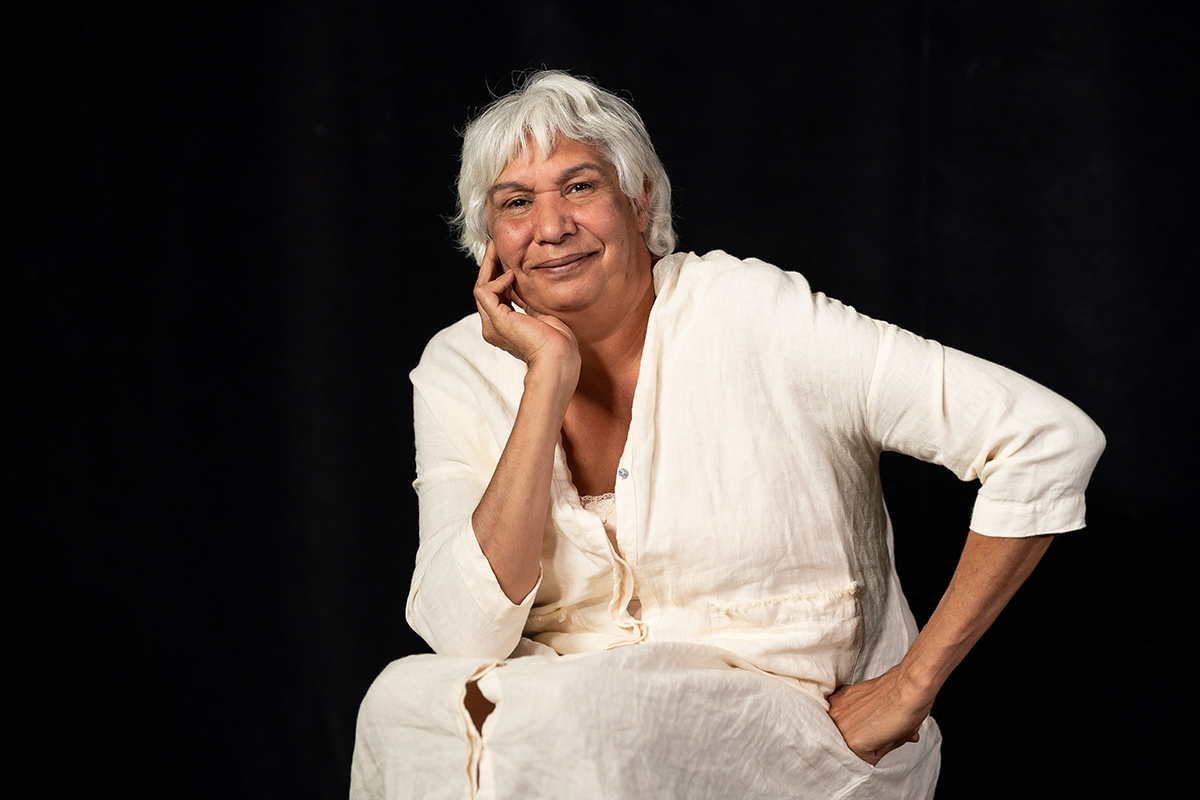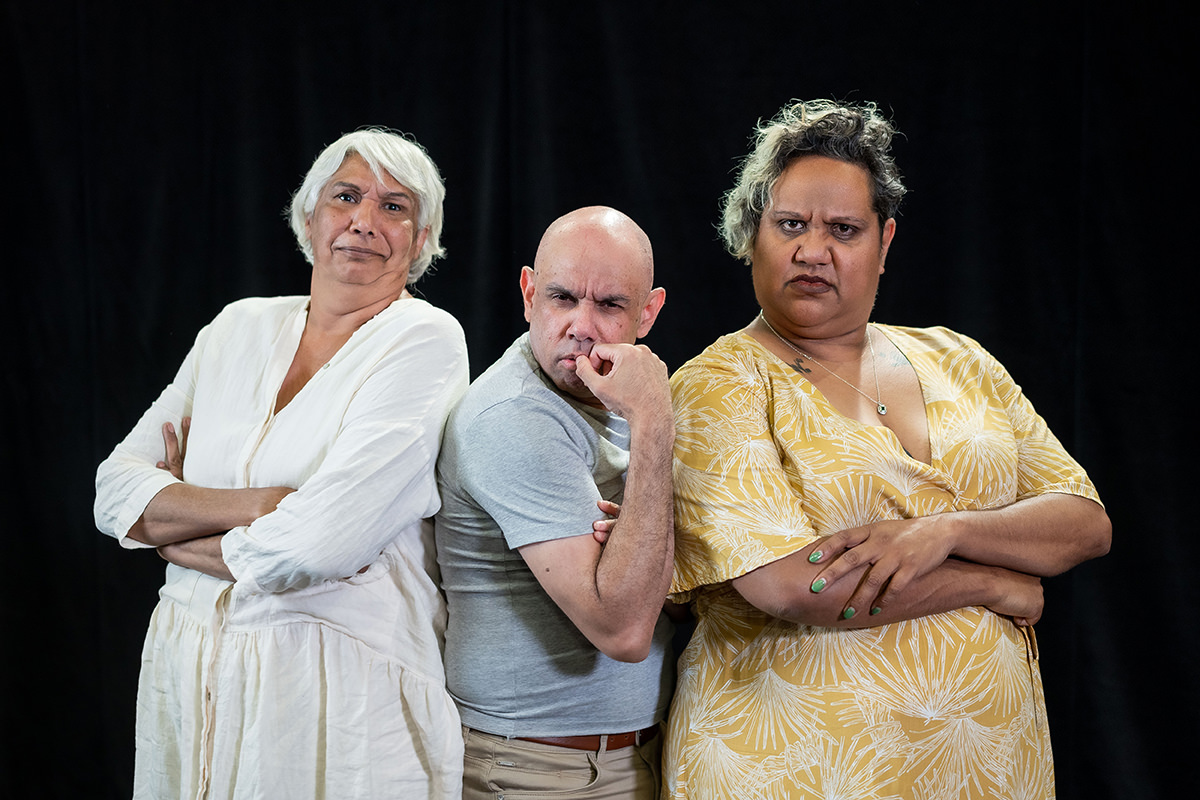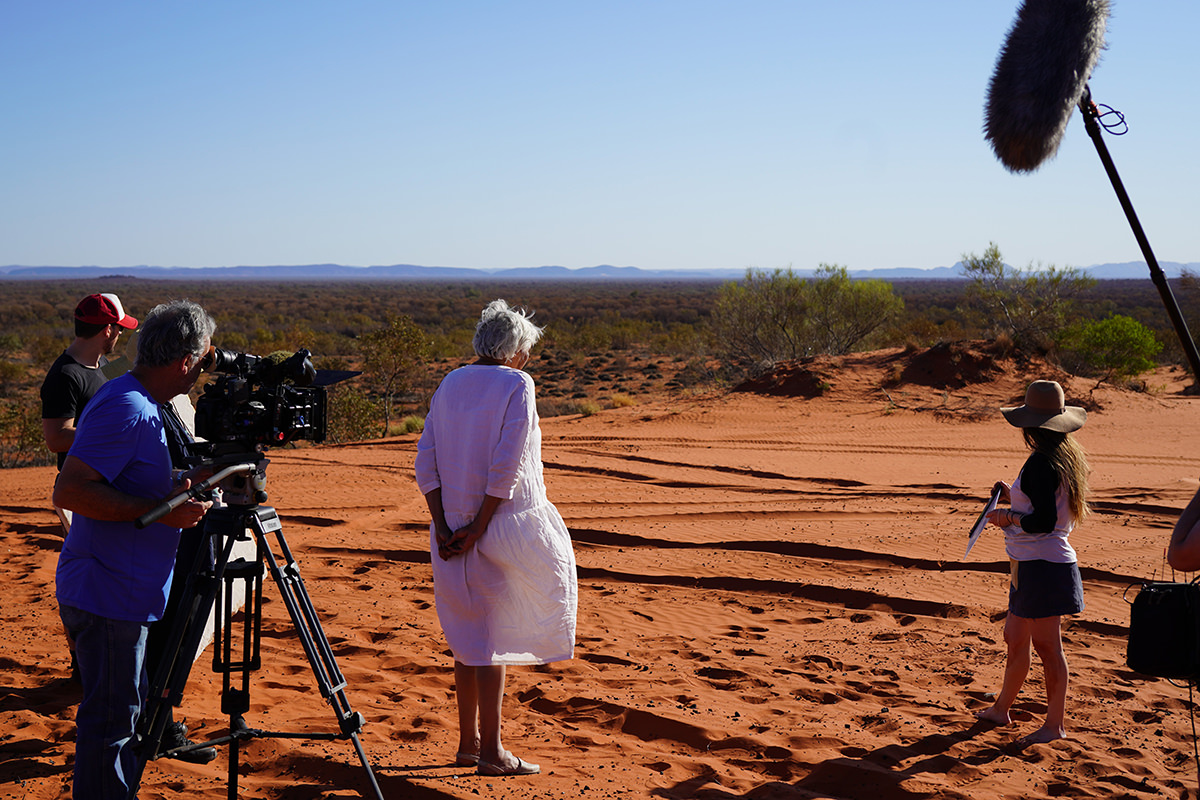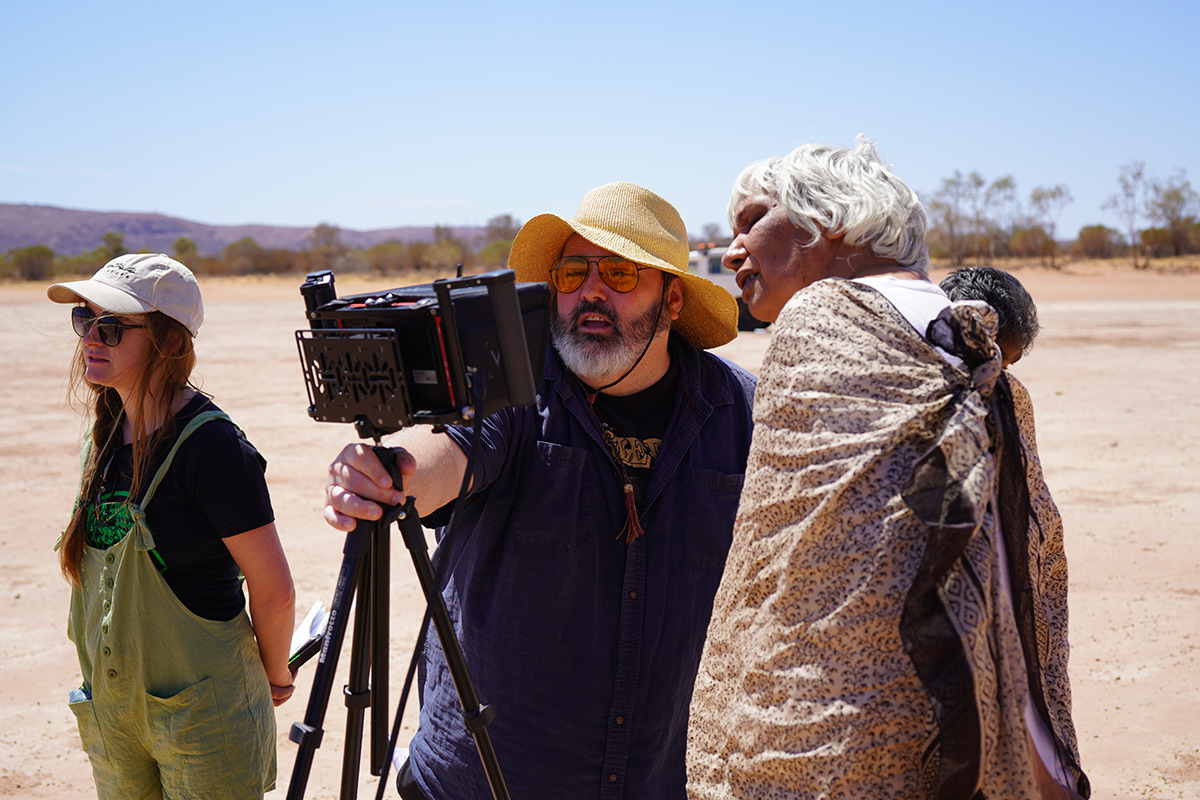Trisha Morton-Thomas: cutting through with comedy
History Bites Back co-director, co-writer and presenter Trisha Morton-Thomas on juggling roles and tough topics with humour.
 Trisha Morton-Thomas
Trisha Morton-Thomas
Trisha Morton-Thomas is constantly shifting gears at Brindle Films. Right now, she’s in the midst of promoting and releasing the NITV documentary History Bites Back, while juggling post-production across three producing projects: the teen motocross drama MaveriX for ABC and Netflix, as well as the MIFF Premiere Fund Documentary Uluru and the Magician, and the doco Audrey & Me.
“I'm just running from one project to the next to the next and I don't have time to think about whether I have my producer's hat, my writer's hat, or my director's hat on,” she says. “I've never really thought about any of those roles as separate, they're just a part of my job description.”
For Morton-Thomas, being busy in 2021 comes off the back of years of hard work and development with Brindle Films, the production company she launched in 2011 with producer/writer Rachel Clements.
“Rachel and I are still pinching ourselves,” she says of the company’s evolution, which she describes as “a long haul.”
“We started this company working two or three years without getting paid… Now we're at this point where we can go to people and say ‘we've got this project’ and they're really interested in hearing about it and trust you with money.”
She says the screen industry is constantly pulled between wanting new voices, but experienced people they can trust.
“People are always looking for the young, snappy and new, but you actually don't get to the point in your life where people trust you with these bigger budgets and bigger projects until you're in your 50s. It's one of those weird industries where you're looking for young and fresh, but you've got to be sort of middle-aged to be able to pull it off.”
Their latest project is one-hour documentary History Bites Back, which airs on NITV and SBS Viceland on 11 July at 8.30pm. In it, Morton-Thomas teams up again with her Occupation: Native collaborator, comedy director/writer Craig Anderson, as well as comedy greats such as Elaine Crombie and Steven Oliver to address some of the trolls on social media and ignorant tweets about First Nations history.
 Trisha Morton-Thomas, Steven Oliver and Elaine Crombie in History Bites Back
Trisha Morton-Thomas, Steven Oliver and Elaine Crombie in History Bites Back
“[They’re] always having a go at Blakfellas and you can answer them all one by one and drive yourself mad, or you can just make a documentary to answer to all of them at once,” she says over the phone from Adelaide.
History Bites Back came at difficult time for Morton-Thomas. In the production notes, she details how two nephews committed suicide during the writing process, how her aunt passed away days before filming, and the discovery of her sister’s terminal cancer diagnosis on the first day of principle photography. Yet it was ‘normal’ to me and most of the Indigenous cast and crew on this doco, she writes. The injustice of this, she says, is reflected in the tone of History Bites Back, which while funny, is as its title suggests: biting. A current of anger and frustration runs hand in hand with the comedy.
“[Comedy] is a part of my family's storytelling toolkit and most Aboriginal people I know have sometimes a really dark sense of humour,” she says.
“It's that old adage of you either cry or you laugh. And laughter is the more positive of the two.”
Through comedy, she says you can also reach an audience you wouldn’t otherwise be able to. She had a similar approach with Occupation: Native, the 2017 documentary that used satire to tell the history of Australia through a First Nations perspective.
Together with History Bites Back co-writer and co-director Craig Anderson, they scrolled through and identified tweets that were particularly misinformed, organised them into categories, and brainstormed the documentary around that for a week. Some sections looked at social security, others citizenship, equal wages, and even the treatment of First Nations people when it came to nuclear bomb testing sites.
“Craig would write it and then he would send it to me, and I would edit and write my parts.”
Much of the documentary has Morton-Thomas addressing the audience down the barrel the camera.
“I wanted to be looking down the barrel of the camera to say, 'well, you know, this is how ill-informed you are',” she says, adding that they were advised to change the names and some wording of the tweets, but otherwise they are largely the same. “And they're not even the really bad ones.”
Filming entirely in the Northern Territory in 2020 brought with it some challenges. The documentary utilised Screen Australia’s Covid-19 Support fund to cover the costs of flying Anderson, some Heads of Department and specialist crew to Alice Springs, where they had to quarantine for two weeks. “Honestly that Covid money, pretty much saved our arses,” Morton-Thomas says.
 Trisha Morton-Thomas on location for History Bites Back
Trisha Morton-Thomas on location for History Bites Back
Then there were some creative obstacles, like figuring out how to depict the First Fleet arriving and declaring the land ‘terra nullius’ in the middle of the Northern Territory.
“Covid was part of our creative choices,” she says. “We sort of had to either think outside the box or just use what was around us, and we were incredibly lucky to have local people, both Aboriginal and non-Aboriginal who were willing to come to this party and give it their all. To me, it's really beautiful to see my community on a film that I make.”
Another stylistic choice in History Bites Back was around the use of a studio location, dressed in black.
“It was specifically designed to look like a stage and feel like a stage,” Morton-Thomas says, including long wide shots that play out almost like theatre. “One of my backgrounds is as an actor. I trained for stage and I really wanted to see if I could capture that [environment] for screen.”
The studio they filmed these scenes in was at CAAMA (Central Australian Aboriginal Media Association) in Alice Springs – an organisation Morton-Thomas has a long history with.
“Well, (director) Rachel Perkins has a lot to answer for, for anyone who's sick of me being on screen because she dragged me away from Alice Springs in the first instance,” she says of her initial move to Sydney. “Rachel and I were both trainees at CAAMA… In fact, [we were] one of the first CAAMA alumnus and we sort of had a lifelong friendship since I was about 17.”
Morton-Thomas studied theatre at Eora College in the 90s, where Perkins “saw one of my indie performances and sort of dragged me into film from there”. After auditioning for Perkins’ feature directorial debut – the 1998 film Radiance – she was eventually cast as one of the three leads.
Looking back, Morton-Thomas says it’s not only Perkins that she’s had the privilege of working with, but their combined success does have a downside.
“I was lucky enough to work with some incredibly talented black filmmakers and non-Aboriginal filmmakers throughout my lifetime. [But] the ones I kind of grew up with, who you look to for support, who prop you up all the time - we're all off doing our own things now,” she says. “I don't think we're ever really going to be working together as a group on projects. I might work with Dena (Curtis) or Rachel or Warwick (Thornton) on something, but never really as a group anymore. I think that's one of the saddest things I find about our success.”
First Nations filmmaking has come a long way since that traineeship at CAAMA in the late 80s. Mystery Road Series 2 alone, which was directed by Wayne Blair and Warwick Thornton, was the highest-rated Screen Australia supported adult TV drama of 2019/20 with 1.2 million viewers*, and was featured in top series of 2020 lists both at home in The Guardian and abroad, in The New York Times.
 Craig Anderson and Trisha Morton-Thomas on location for History Bites Back
Craig Anderson and Trisha Morton-Thomas on location for History Bites Back
“After years going to pitch films at all of these markets and people saying ‘we're not interested in Indigenous content, audiences aren't interested’, and now we're just smashing it out of the ballpark,” she says. “It’s beautiful to see.”
As is watching the next generation of First Nations storytellers come through the ranks.
“I love the little newbies,” she says. “Aren't they amazing?!”
Her advice for them is around perseverance.
“If you can't go through it, then go around, go over it, build under it. Just don't let anybody tell you can't do it. Cause some projects might take you up to ten years to get it going, but if you give up then it's never going to happen. And if you don't believe in yourself more than anybody else, it's never going to happen.”
Her other key piece of advice is once you do get an idea going, to remember your crew and the experienced people around you are an asset, not an obstacle.
“One of the biggest things that young people have to learn is, ‘hey, this is no longer just your baby. This is everybody's baby and it takes this whole village to raise it’,” she says.
“You have to trust all of these people with your idea to bring it to fruition [and] understand that these people want the absolute best for this as well. [They want] to make your work the best it can be… The more open you are at collaboration the better your film's going to be.”
History Bites Back airs on 11 July at 8.30pm on NITV and SBS Viceland.
*Source: OzTAM and RegionalTAM, 5-city-metro, combined markets, total people, average audience, consolidated 28. Metro viewers: Mystery Road: 778,000;

What to read next
To mark NAIDOC Week 2020, we’ve put together a collection of 11 Indigenous Australian dramas across film, TV series and online funded by Screen Australia and available to watch now.
11 Nov 2020
Georgia Hing